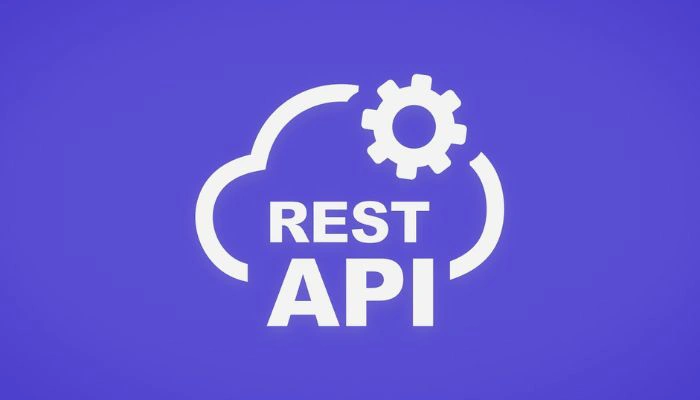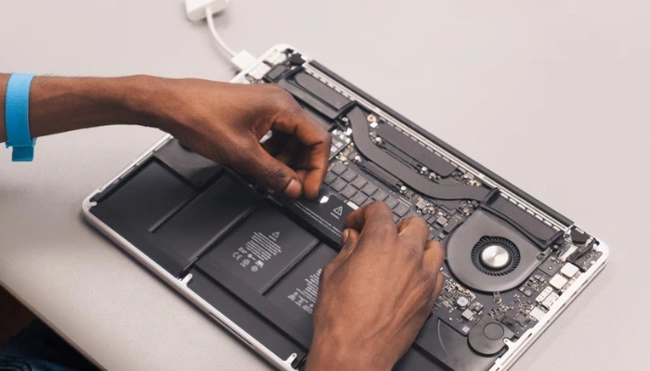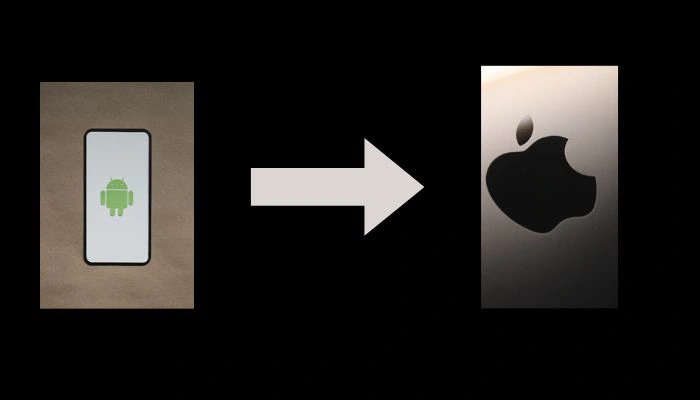What is .NET MAUI and Does it Mean the End of Xamarin Forms
The world of cross-platform application development is a dynamic one, constantly evolving to offer developers more efficient and powerful tools. For years, Xamarin Forms stood as a prominent solution, enabling developers to build mobile applications for iOS and Android from a single codebase using C#. It was a game-changer, allowing for significant code reuse and faster development cycles. However, as technology progresses, so too do the demands for performance, flexibility, and a unified development experience across an even broader range of devices.
This constant evolution brings us to .NET MAUI, a significant leap forward in Microsoft's cross-platform development story. Standing for .NET Multi-platform App UI, it represents the next generation of cross-platform development, extending beyond mobile to encompass desktop applications for Windows and macOS, all while leveraging the latest advancements in the .NET ecosystem. The arrival of .NET MAUI has naturally led many to question the future of Xamarin Forms. Is this the end of an era, or simply a transformation? The answer, as we'll explore, points strongly towards the former, with .NET MAUI emerging as the clear successor.
This article will delve into what .NET MAUI is, its core features, and how it addresses some of the challenges faced by Xamarin Forms. We'll examine the compelling reasons why developers are embracing this new framework and, crucially, clarify the implications for existing Xamarin Forms projects and the path forward. By the end, you'll have a comprehensive understanding of this pivotal shift in the .NET development landscape.
=> Get Mobile Application Migration Xamarin to MAUI Services
.NET MAUI: The Evolution of Cross-Platform Development
What is .NET MAUI at its core? It's Microsoft's unified, open-source framework for building modern, native, and high-performance applications that run on Android, iOS, macOS, and Windows from a single C# codebase. It effectively merges the functionalities that Xamarin Forms provided for mobile with the ability to target desktop environments, offering a truly multi-platform UI framework. This unification is a key differentiator, streamlining the development process significantly.

Think of .NET MAUI not as a completely new paradigm, but as the natural evolution of Xamarin Forms. It takes the proven concepts of shared code and native UI rendering, and enhances them with a modernized architecture, improved performance, and a simplified project structure. Developers can continue to use C# and XAML, making the transition relatively smooth for those already familiar with Xamarin Forms. However, the underlying architecture has been re-engineered to be more efficient and extensible.
One of the most significant improvements brought by .NET MAUI is its single project experience. In Xamarin Forms, developers often had to manage separate projects for each platform (iOS, Android, UWP), leading to increased complexity in managing resources, dependencies, and platform-specific code. .NET MAUI addresses this by providing a unified project structure that allows you to target all supported platforms from a single codebase, simplifying development and maintenance efforts significantly. This also extends to shared resources like images and fonts, which can now be managed in one central location.
How does .NET MAUI improve cross-platform development?

- Unified Codebase and Single Project Structure: This is perhaps the most impactful improvement. Instead of managing separate projects for each platform, .NET MAUI allows for a single project that can target Android, iOS, macOS, and Windows. This drastically reduces project setup time, simplifies dependency management, and makes it easier to share code and resources.
- Enhanced Performance: .NET MAUI is built on the latest versions of .NET, leveraging performance enhancements in .NET 6 and beyond. It features slim renderers that directly access native UI controls, leading to faster startup times, improved rendering efficiency, and better overall app responsiveness compared to Xamarin Forms.
- Broader Platform Reach: While Xamarin Forms was primarily focused on mobile (iOS and Android), .NET MAUI extends its reach to include desktop applications for Windows (using WinUI 3) and macOS. This means developers can truly write once and deploy to a much wider array of devices, including desktops, tablets, and mobile phones, all from a single codebase.
- Hot Reload for Faster Development: Both XAML Hot Reload and .NET Hot Reload are fully supported in .NET MAUI. This allows developers to make changes to their UI or C# code and see the updates reflected instantly in the running application without needing to rebuild or restart. This significantly speeds up the development and debugging process.
- Modern Architectural Patterns: .NET MAUI embraces modern development patterns like Model-View-ViewModel (MVVM) and supports Blazor Hybrid, enabling developers to integrate Blazor web UI components directly into their native apps. This opens up new possibilities for sharing UI logic with web applications.
- Simplified Resource Management: Managing images, fonts, and other assets across multiple platforms was often cumbersome in Xamarin Forms. .NET MAUI simplifies this by allowing you to include these resources in your single project, and the framework handles the platform-specific packaging.
- Access to Native APIs: Despite its cross-platform nature, .NET MAUI provides seamless access to platform-specific APIs and functionalities when needed. This ensures that developers can leverage the unique capabilities of each operating system without sacrificing the benefits of cross-platform development.
These improvements collectively make .NET MAUI a more robust, efficient, and versatile framework for cross-platform application development, addressing many of the pain points developers experienced with previous solutions.
The Evolution of Cross-Platform Development: From Xamarin to .NET MAUI
The journey from Xamarin Forms to .NET MAUI is a testament to the continuous drive for innovation in software development. To understand the significance of .NET MAUI, it's helpful to look at the landscape it emerged from. Xamarin Forms, for its time, was revolutionary. It allowed C# developers to target iOS and Android, bringing their existing skills to mobile development and fostering significant code reuse.
However, as the demands for cross-platform solutions grew, so did the desire for a more unified and streamlined experience. Xamarin Forms, while powerful, sometimes presented challenges such as:
Fragmented Project Structure: Maintaining separate projects for each platform could become unwieldy, especially for larger applications with numerous shared components and platform-specific customizations.
Performance Nuances: While generally good, Xamarin Forms occasionally faced performance hurdles in highly graphics-intensive applications or scenarios requiring deeply customized native UI.
Limited Desktop Support: Its primary focus remained mobile, with desktop support often requiring additional effort or third-party solutions.
Dependency on Xamarin Ecosystem: While integrated with .NET, it still had its own distinct ecosystem and update cycles.
These challenges paved the way for .NET MAUI, which was conceived as the future of cross-platform development within the broader .NET ecosystem. Microsoft's vision was to create a single, unified framework that transcended mobile-only boundaries, offering a truly multi-platform solution for both mobile and desktop applications.
Here's a comparison of key aspects between Xamarin Forms and .NET MAUI:
| Feature | Xamarin Forms | .NET MAUI |
| Primary Platforms | iOS, Android, UWP (limited) | iOS, Android, macOS, Windows |
| Project Structure | Multiple projects (one per platform) | Single unified project (multi-targeting) |
| UI Rendering | Custom Renderers (sometimes complex) | Slim Renderers, Handler-based (more direct) |
| Performance | Good, but could have overhead due to abstraction | Improved, leveraging latest .NET optimizations |
| Hot Reload | XAML Hot Reload, .NET Hot Reload (limited) | Full support for XAML and .NET Hot Reload |
| Unified Libraries | Xamarin.Essentials (separate library) | Integrated into .NET MAUI (unified) |
| Blazor Integration | No direct integration | Seamless Blazor Hybrid support |
| Desktop Support | Limited, often required UWP for Windows | First-class support for Windows (WinUI 3) & macOS |
This table clearly illustrates the strategic shift. .NET MAUI is designed to be more cohesive, performant, and versatile, directly addressing the limitations and evolving needs identified with Xamarin Forms.
The Fate of Xamarin Forms: An End, and a New Beginning
So, does .NET MAUI mean the end of Xamarin Forms? In short, yes, it does. Microsoft has officially concluded support for Xamarin Forms. As of May 1, 2024, Xamarin Forms no longer receives active support or updates. This means that while existing Xamarin Forms applications will continue to function, they will not receive new features, bug fixes, or security updates. This strategic decision by Microsoft underscores their complete commitment to .NET MAUI as the future of cross-platform development within the .NET ecosystem.

For developers with existing Xamarin Forms applications, this transition necessitates a migration to .NET MAUI to ensure continued support, security, and access to the latest platform features. Microsoft has provided tools and guidance, such as the .NET Upgrade Assistant, to aid in this migration process, though some manual effort may still be required depending on the complexity of the application. The goal is not to force a complete rewrite, but to enable a smoother transition to the modernized framework.
This pivot is not merely a rebranding; it's a fundamental architectural evolution. Xamarin Forms laid the groundwork, proving the viability of cross-platform development with C#. .NET MAUI builds upon that foundation, incorporating the lessons learned and leveraging the power of the unified .NET platform. It signifies a mature and consolidated approach to building applications that target a wide range of devices from a single, highly productive environment.
Key reasons for the transition from Xamarin Forms to .NET MAUI:
- Unification of .NET: Microsoft's long-term strategy is to unify the entire .NET platform. .NET MAUI is a crucial part of this, bringing mobile and desktop application development under the single, modern .NET umbrella.
- Improved Developer Experience: The single project structure, enhanced hot reload capabilities, and streamlined resource management in .NET MAUI significantly improve the developer's productivity and overall experience.
- Future-Proofing: As operating systems evolve and new device form factors emerge, .NET MAUI is designed to be more adaptable and extensible, ensuring that applications built with it can keep pace with technological advancements.
- Performance and Modern UI: The re-engineered UI controls and performance optimizations in .NET MAUI deliver a more fluid and native-like experience to end-users, which is critical in today's app market.
Therefore, while Xamarin Forms served its purpose admirably, its lifecycle has reached its conclusion, making way for its more capable and forward-looking successor: .NET MAUI.
Conclusion
The arrival of .NET MAUI marks a significant milestone in cross-platform application development. It represents a mature and unified approach, building upon the foundations laid by Xamarin Forms while addressing its limitations and extending its reach to desktop environments. With its single project structure, enhanced performance, and seamless integration with the broader .NET ecosystem, .NET MAUI is undeniably the future for building native, multi-platform applications with C#.
While Xamarin Forms served its purpose admirably, its journey has concluded, making way for its more robust and versatile successor. For developers and businesses alike, embracing .NET MAUI is not just an upgrade; it's a strategic move to ensure applications remain modern, secure, performant, and future-proof. The transition, while requiring some effort for existing projects, opens up a world of possibilities for delivering rich, native experiences across an ever-growing array of devices.









